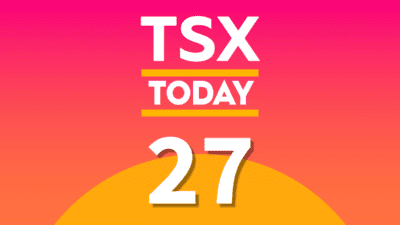Potash Corporation of Saskatchewan Inc. (TSX:POT)(NYSE:POT), the world’s largest manufacturer of fertilizer, announced mixed third-quarter earnings results before the market opened on October 29, and its stock has responded by falling over 3%.
The stock now sits more than 45% below its 52-week high of $37.60 reached back in February, so let’s take a closer look at the results to determine if now is finally the time to begin scaling in to long-term positions, or if it could head even lower from here.
Lower potash and nitrogen sales lead to weak results
Here’s a summary of Potash’s third-quarter earnings results compared with what analysts had expected and its results in the same period a year ago. All figures are in U.S. dollars.
| Metric | Q3 2015 Actual | Q3 2015 Expected | Q3 2014 Actual |
| Earnings Per Share | $0.34 | $0.37 | $0.38 |
| Revenue | $1.53 billion | $1.45 billion | $1.64 billion |
Source: Thomson Reuters Corp.
Potash’s earnings per share decreased 10.5% and its revenue decreased 6.8% compared with the third quarter of fiscal 2014. These weak results can be attributed to sales declining in two of its three major segments, including a 3.7% decline to $548 million in its potash segment and a 17.1% decline to $462 million in its nitrogen segment, and these declines could only be partially offset by a 4.3% increase to $416 million in its phosphate segment.
Here’s a quick breakdown of some other notable statistics from the report compared with the year-ago period:
- Net income decreased 11% to $282 million
- Production of potash increased 46.7% to 2.13 million tonnes and sales volume of potash increased 8.2% to 2.18 million tonnes
- Average realized sales price of potash decreased 11% to $250 per tonne
- Production of nitrogen decreased 6.7% to 734,000 tonnes and sales volume of nitrogen decreased 7.9% to 1.43 million tonnes
- Average realized sales price of nitrogen decreased 10.4% to $319 per tonne
- Production of phosphate increased 2.6% to 442,000 tonnes and sales volume of phosphate increased 5.1% to 762,000 tonnes
- Average realized sales price of phosphate increased 4.1% to $538 per tonne
- Adjusted earnings before interest, taxes, depreciation, and amortization decreased 12.9% to $593 million
- Gross profit decreased 14.3% to $505 million
- Free cash flow decreased 38.1% to $172 million
As a result of its weak performance in the third quarter, Potash lowered its full-year outlook on fiscal 2015, now calling for earnings per share in the range of $1.55-1.65, which is down from its previous outlook of $1.75-1.95 provided in the second quarter and down from its outlook of $1.75-2.05 provided at the beginning of the year.
Is now finally the time to begin buying Potash’s shares?
It was a very weak quarter for Potash, so I think the weakness in its stock is warranted. However, I think the stock is now at, or very close to, its bottom and represents a great long-term investment opportunity today, because it trades at very inexpensive valuations and has a very high dividend yield.
First, Potash’s stock now trades at just 12.8 times its median earnings-per-share outlook of $1.60 for fiscal 2015 and only 11.8 times analysts’ estimated earnings per share of $1.73 for fiscal 2016, both of which are inexpensive compared with its five-year average multiple of 17.9 and its industry average multiple of 18.5.
At the very least, I think Potash’s stock could trade at a fair multiple of 15, which would place its shares around $26 by the conclusion of fiscal 2016, representing upside of more than 26% from today’s levels.
Second, Potash pays a quarterly dividend of $0.38 per share, or $1.52 per share annually, giving its stock a 7.4% yield, and this is significantly higher than the industry average yield of 1.9%. Investors should also note that it has raised its dividend for five consecutive years, and its ample free cash flow generation, including $851 million in the first nine months of fiscal 2015, could allow this streak to continue in 2016.
With all of the information provided above in mind, I think Potash Corporation of Saskatchewan represents one of the top turnaround plays in the market. Foolish investors should strongly consider beginning to scale in to long-term positions today.







